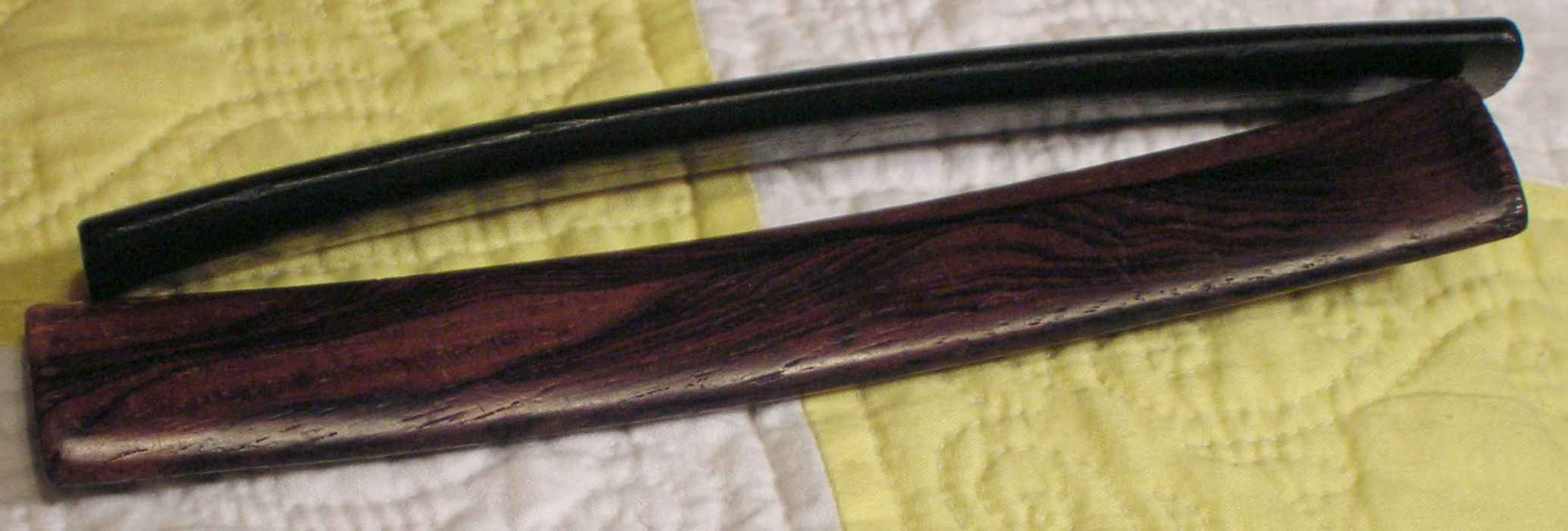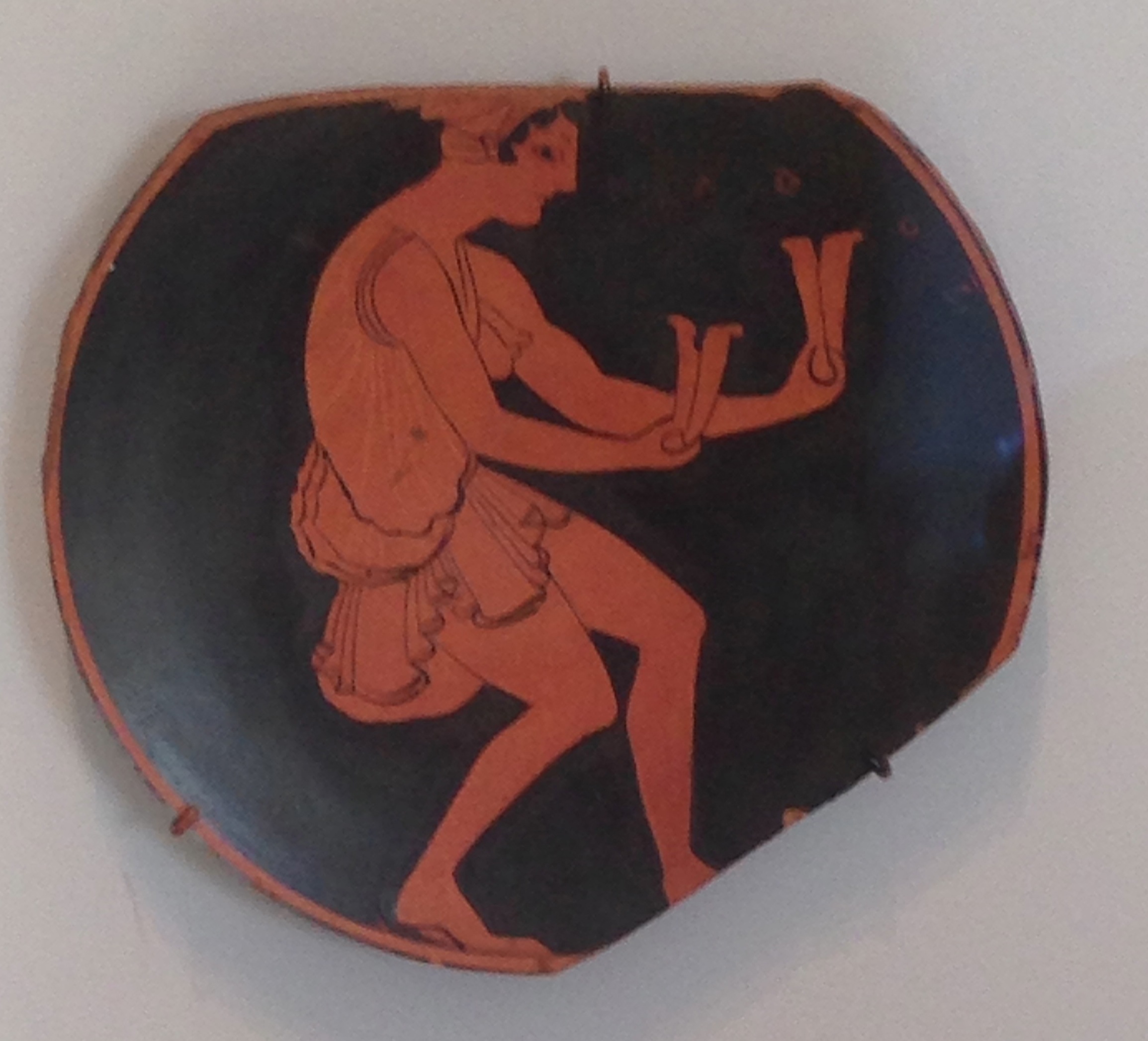Bones (musical Instrument) on:
[Wikipedia]
[Google]
[Amazon]
The bones, also known as rhythm bones, are a 



Rhythm Bones Society
by Alan Lewis, July 4, 2002. Accessed May 31, 2007.
Bones and the Man: Toward a History of Bones Playing
Robert E McDowell (1982) ''The Journal of American Culture'' 5:1, (Spring 1982) pp. 38–43. {{Authority control Concussion idiophones Hand percussion North American percussion instruments European percussion instruments Unpitched percussion instruments Irish musical instruments American musical instruments
folk instrument
A folk instrument is a musical instrument that developed among common people and usually does not have a known inventor. It can be made from wood, metal or other material. Such an instrument is played in performances of folk music.
Overview
The ...
that, in their original form, consists of a pair of animal bone
A bone is a Stiffness, rigid Organ (biology), organ that constitutes part of the skeleton in most vertebrate animals. Bones protect the various other organs of the body, produce red blood cell, red and white blood cells, store minerals, provid ...
s, but may also be played on pieces of wood or similar material. Sections of large rib
In vertebrate anatomy, ribs ( la, costae) are the long curved bones which form the rib cage, part of the axial skeleton. In most tetrapods, ribs surround the chest, enabling the lungs to expand and thus facilitate breathing by expanding the ches ...
bones and lower leg bones are the most commonly used bones, although wooden sticks shaped like true bones are now more often used. Metal spoon
A spoon is a utensil consisting of a shallow bowl (also known as a head), oval or round, at the end of a handle. A type of cutlery (sometimes called flatware in the United States), especially as part of a place setting, it is used primarily for ...
s may be used instead, as is common in the United States
The United States of America (U.S.A. or USA), commonly known as the United States (U.S. or US) or America, is a country primarily located in North America. It consists of 50 states, a federal district, five major unincorporated territorie ...
, known as " playing the spoons". The technique probably arrived in the U.S. via Irish
Irish may refer to:
Common meanings
* Someone or something of, from, or related to:
** Ireland, an island situated off the north-western coast of continental Europe
***Éire, Irish language name for the isle
** Northern Ireland, a constituent unit ...
and other Europe
Europe is a large peninsula conventionally considered a continent in its own right because of its great physical size and the weight of its history and traditions. Europe is also considered a Continent#Subcontinents, subcontinent of Eurasia ...
an immigrants, and has a history stretching back to ancient China, Egypt, Greece, and Rome.
They have contributed to many music genres, including 19th century minstrel shows
The minstrel show, also called minstrelsy, was an American form of racist theatrical entertainment developed in the early 19th century.
Each show consisted of comic skits, variety acts, dancing, and music performances that depicted people spe ...
, traditional Irish and Scottish music, the blues, bluegrass, zydeco
Zydeco ( or , french: Zarico) is a music genre that evolved in southwest Louisiana by French Creole speakers which blends blues, rhythm and blues, and music indigenous to the Louisiana Creoles and the Native American people of Louisiana. Al ...
, French-Canadian music
French Canadian music is music derived from that brought by the early French settlers to what is now Quebec and other areas throughout Canada, or any music performed by the French Canadian people. Since the arrival of French music in Canada, t ...
, and music from Cape Breton in Nova Scotia
Nova Scotia ( ; ; ) is one of the thirteen provinces and territories of Canada. It is one of the three Maritime provinces and one of the four Atlantic provinces. Nova Scotia is Latin for "New Scotland".
Most of the population are native Eng ...
. The clacking of the loose rib bones produces a much sharper sound than the zydeco washboard or frottoir, which mimics rattling a bone up and down a fixed ribcage.



Description
Rhythm bones are typically about 12 cm to 18 cm (5" to 7") in length, but can be much longer, and they are often curved, roughly resembling miniature barrel staves. Bones can also be flat, for example by the cutting of ayardstick
A meterstick, metrestick, or yardstick is either a straightedge or foldable ruler used to measure length, and is especially common in the construction industry. They are often made of wood or plastic, and often have metal or plastic joints so ...
. They are played by holding them between one's fingers, convex
Convex or convexity may refer to:
Science and technology
* Convex lens, in optics
Mathematics
* Convex set, containing the whole line segment that joins points
** Convex polygon, a polygon which encloses a convex set of points
** Convex polytope ...
surfaces facing one another, and moving one's wrist in such a way that they knock against each other. One method involves placing the bones to either side of the middle finger
The middle finger, long finger, second finger, third finger, toll finger or tall man is the third digit of the human hand, located between the index finger and the ring finger. It is typically the longest digit. In anatomy, it is also called ...
such that approximately two-thirds of their length extends along the palm while the remainder protrudes above the fingers on the backside of the hand. The hand is held in a loose fist with the bones and the curled fingers roughly parallel to the palm, with the bone closest to the ring finger
The ring finger, third finger, fourth finger, leech finger, or annulary is the fourth digit of the human hand, located between the middle finger and the little finger.
Sometimes the term ring finger only refers to the fourth digit of a left-han ...
gently held against the palm by the tip of the ring finger placed on its edge, while the other bone is left free to move in the "hinge" formed by the index
Index (or its plural form indices) may refer to:
Arts, entertainment, and media Fictional entities
* Index (''A Certain Magical Index''), a character in the light novel series ''A Certain Magical Index''
* The Index, an item on a Halo megastru ...
and middle fingers as they gently hold it. It is also possible to play the "hinge" on the lower (ring finger) bone while locking the top (index finger) bone against the palm.
Technique
A player may use a pair of bones in each hand, or just a single pair in one hand. A critical element to playing the bones is not trying to force them to make contact with one another through finger manipulation but allowing their momentum to do the work. By moving the hand back and forth across the chest, with just enough force on the bones to keep them from falling out of the hand, a patient learner can produce a triple click. This "click-it-y" sound is the essential ingredient to playing the bones. A double-click can be produced by the same movement of the hand with the addition of a bit of pressure to the bones to suppress the third click. Once these elemental triple and double figures have been mastered, they can be combined to create complex combinations of rhythmic sounds. The effect is further enhanced by the use of two pairs of bones, one in each hand. A skilled practitioner can produce a wide variety of percussive sounds reminiscent of those made by atap dancer
Tap dance is a form of dance characterized by using the sounds of tap shoes striking the floor as a form of percussion. Two major variations on tap dance exist: rhythm (jazz) tap and Broadway tap. Broadway tap focuses on dance; it is widely perf ...
.
The Irish tradition is unique to the island. While North American players are typically two-handed, the Irish tradition finds the vast majority of bones players using only one hand, a distinction in method that has a strong impact on musical articulation.
The comparison of the function of banjo roll
In bluegrass music, a banjo roll or roll is a pattern played by the banjo that uses a repeating eighth-note arpeggio – a broken chord – that by subdividing the beat 'keeps time'. "Each standard"roll pattern is a ''right hand'' fingering p ...
s with that of bones within an ensemble suggests that stereotypically a subdivided accompaniment pattern is played on the bones.
The song "This Old Man
"This Old Man" is an English language children's song, counting exercise and nursery rhyme with a Roud Folk Song Index number of 3550.
Origins and history
The origins of this song are obscure. The earliest extant record is a version noted ...
" describes bone playing, particularly sheep bone playing (hence paddywhack
The nuchal ligament is a ligament at the back of the neck that is continuous with the supraspinous ligament.
Structure
The nuchal ligament extends from the external occipital protuberance on the skull and median nuchal line to the spinous proc ...
).
Notable bones players
*Hillar Bergman *Brother Bones
Freeman Davis (October 4, 1902 – June 14, 1974) was an American whistling and bone playing recording artist best known by his stage names "Brother Bones" and "Whistling Sam".
Early life
Freeman Davis was born in Montgomery, Alabama.
Career
...
(1902–1974)
*Scatman Crothers
Benjamin Sherman Crothers (May 23, 1910 – November 22, 1986), known professionally as Scatman Crothers, was an American actor and musician. He is known for playing Louie the Garbage Man on the TV show ''Chico and the Man'', and Dick Hallo ...
(1910–1986)
*Dom Flemons
Dominique Flemons (born August 30, 1982) is an American old-time music, Piedmont blues, and neotraditional country multi-instrumentalist, singer, and songwriter. He is a proficient player of the banjo, fife, guitar, harmonica, percussion, quills ...
both with and without the Carolina Chocolate Drops
The Carolina Chocolate Drops were an old-time string band from Durham, North Carolina. Their 2010 album, ''Genuine Negro Jig,'' won the Grammy Award for Best Traditional Folk Album at the 53rd Annual Grammy Awards, and was number 9 in ''fRoots'' ...
*Peadar Mercier (1914–1991)
*Charles "Charlie Bones" Ginsburg (1921–2008)
*Barry "Bones" Patton
*Percy Danforth (1900-1992)
See also
*Clapper (musical instrument)
A clapper is a basic form of percussion instrument. It consists of two long solid pieces that are struck together producing sound. A straightforward instrument to produce and play, they exist in many forms in many different cultures around th ...
* Paiban
The ''paiban'' () is a clapper made from several flat pieces of hardwood or bamboo (or, formerly, sometimes also ivory or metal), which is used in many different forms of Chinese music. There are many different types of ''paiban'', and the instr ...
- Chinese wooden clappers
* Castanets
Castanets, also known as ''clackers'' or ''palillos'', are a percussion instrument (idiophone), used in Spanish, Kalo, Moorish, Ottoman, Italian, Sephardic, Swiss, and Portuguese music. In ancient Greece and ancient Rome there was a similar ...
References
External links
Rhythm Bones Society
by Alan Lewis, July 4, 2002. Accessed May 31, 2007.
Bones and the Man: Toward a History of Bones Playing
Robert E McDowell (1982) ''The Journal of American Culture'' 5:1, (Spring 1982) pp. 38–43. {{Authority control Concussion idiophones Hand percussion North American percussion instruments European percussion instruments Unpitched percussion instruments Irish musical instruments American musical instruments